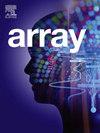Hybrid framework for Remaining Useful Life (RUL) prediction of rolling bearing faults
IF 4.5
Q2 COMPUTER SCIENCE, THEORY & METHODS
引用次数: 0
Abstract
Remaining Useful Life (RUL) prediction is critical for preventing catastrophic failures in industrial systems, enabling efficient maintenance scheduling and resource optimization. This paper presents a novel hybrid framework for RUL prediction that integrates advanced feature extraction with state-of-the-art deep learning methods. The proposed framework employs Modified Multiscale Permutation Entropy (MMPE) to compute a robust Health Indicator (HI) representing the system’s degradation behavior. A regression transformer model, trained on the FEMTO dataset and validated on the CWRU dataset, leverages the HI to capture complex temporal dependencies and predict RUL with high accuracy. Experimental results demonstrate the superior performance of the proposed approach, achieving a Mean Squared Error (MSE) of and Mean Absolute Error (MAE) of , significantly outperforming existing methods. The framework’s ability to generalize across datasets and operating conditions highlights its applicability for real-world industrial settings, offering a robust and interpretable solution for predictive maintenance.
滚动轴承故障剩余使用寿命预测的混合框架
剩余使用寿命(RUL)预测对于防止工业系统的灾难性故障,实现有效的维护计划和资源优化至关重要。本文提出了一种新的RUL预测混合框架,该框架集成了先进的特征提取和最先进的深度学习方法。该框架采用改进的多尺度置换熵(MMPE)来计算代表系统退化行为的稳健健康指标(HI)。在FEMTO数据集上训练并在CWRU数据集上验证的回归转换模型利用HI捕获复杂的时间依赖性,并以高精度预测RUL。实验结果表明,该方法性能优越,均方误差(MSE)为3.6×10−5,平均绝对误差(MAE)为5.48×10−3,显著优于现有方法。该框架具有跨数据集和操作条件的泛化能力,突出了其对现实工业环境的适用性,为预测性维护提供了强大且可解释的解决方案。
本文章由计算机程序翻译,如有差异,请以英文原文为准。
求助全文
约1分钟内获得全文
求助全文

 求助内容:
求助内容: 应助结果提醒方式:
应助结果提醒方式:


